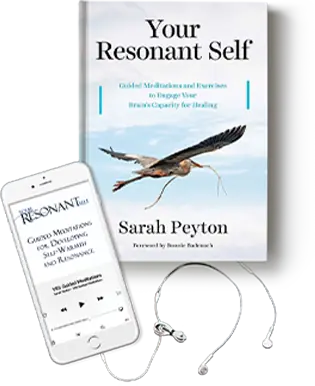Healing Addiction With Unconscious Contract Work
Substance use is often an attempt to sooth our lonely parts
As I was doing a sand tray constellations process yesterday, my attention was drawn to a small figure with huge, ghost-like eyes and no arms or legs, and then to a large black hollow log with holes in it.
Without having any sense of what I was doing, I placed the log standing on end in the sand, and I put the little figure inside it, peeking out of the hole. I placed a few other figures in the sand tray, trying to work out what belonged where, and what didn’t belong at all.
Then I looked up and caught a glimpse of this little, frightened, helpless figure inside of this large, rough-hewn log and tears sprang to my eyes.
In that moment, I realized that there was a little one inside of me who was that frightened and helpless, and who I had never even known was there, and that even thought I hadn’t consciously known that she existed, she was the little one that I was always trying to take care of with my addictions and compulsions (work, sweets, distance, learning).
The cult of aloneness
I’ve written before about the icon of the lone hero in our western world – a representation that results in a cult of aloneness, a representation that is both the result of our left hemisphere shift into getting things done and taking care of business, and which reinforces its own mythology, like a snake forever devouring itself.
It is in part a result of the patterns of avoidant attachment: leaving babies to “cry it out” (whatever “it” is) on their own; being interactive and responsive with babies, except when they are crying; and diminishing joy (only smiling moderately in response to an exuberant little one.)
All of this non-responsiveness creates a kind of layer of insulation in the tender attachment reaching of infants, where the babies learn to reach only for themselves.
The result of this insulation is a continuing diminution of joy, and a loss of all the layers of meaning and richness that a right hemisphere that has been structured by resonance is capable of as it ages into this world like the finest of wines, creating webs of interconnection and relationship that can bring together lifetimes and continents.
But addictions and compulsions don’t just come from living the insulated life, or from missing the rich life of a right hemisphere organized by resonant reflection…
How traumatic lonely can lead to addiction
The little ones hidden within us, the ones we try to care for with these self-harming strategies, are formed and then left behind by crashing waves of trauma – an intensity of loneliness, of terror, or of rage, which then recede, leaving behind frozen parts of self, unchanging in their need, forever starving, forever needing us to feed them something that is almost what they most want, but which can never be enough, as the addiction or compulsion is never the missing thing itself.
We all have these moments in our past, moments when emotion overwhelmed us and left us turned to a kind of stone, knots of memory that serve as vortices of life energy, pulling us into them and stopping us in our tracks, with the only possible movement left some sort of effort to feed what can never be fed.
The more such moments a person carries within them, the more they have to heal from what is called “disorganized,” or “traumatic attachment” in order to find a way through the thicket of addictions or compulsions.
The discovery of the truth of the moments of overwhelm (loneliness/abandonment, terror or rage) in our childhoods comes gradually. Most of us start out (even those of us who are incarcerated for addictions or compulsions) saying “I had a good childhood. My parents were good people. They tried as hard as they could. I knew they loved me.”
And all of these things remain true throughout the healing journey, but the sense of the lives our child-selves lived becomes more and more complex, deeper, as we start to become acquainted with the enormities that our inner children’s bodies were struggling to integrate and digest: the terror that lived in our mothers’ eyes from their childhoods; the rages that swept through a parent or grandparent; the trances of punishment or scorn that our parents entered, during which we disappeared entirely for them as small humans.
Each such moment is an experience that continues to live within us calling out for accompaniment and for the unconscious contracts that our bodies have made in moments of trauma, to stay forever frozen, or forever straining, or forever seeking, to be dissolved.
What are unconscious contracts?
Unconscious contracts are agreements that our younger selves, our bodies and our nervous systems make with us or with our caregivers to stay in a particular state that we believe would resolve the traumatic experience.
So an unconscious contract might lead us to addictive patterns, for instance:
- We will find a substance that resolves our brain’s discomfort from loneliness (opioids, fats, sugars, salts) or fear (benzodiazepines) or trauma (cannabinoids) or incapacity to focus or feel pleasure (methamphetamines, cigarettes, coffee) or shame (alcohol).
- We will create a contract to forever seek these substances in order to balance our brains and care for the traumatized little one inside of us.
- We can stay in an eternal search state that involves behaviors instead of addictions, like gambling, shopping, working, sex or love addictions, where the action we undertake comes close in some way to resolving the problem left behind by the traumatic overwhelm.
- We can become addicted to video games that permit engagement – when what we ache for is actual engagement with humans that comes without an unpayable price, or we can use video games to still the cruel automatic voice of the brain that arises from unresolved trauma.
The healing work in the area of addiction takes you into the deeper layers of self, creating ever more expansive self-compassion and gentleness.
The healing of personal addiction is honorable, rich work, and it is the fractal for the healing that our society needs to undertake in order to be able to live in a non-addicted state of being and reciprocity with our planet.
Learn more about working with unconscious contracts in my 16-week Series, Your Brain and Your Contracts







